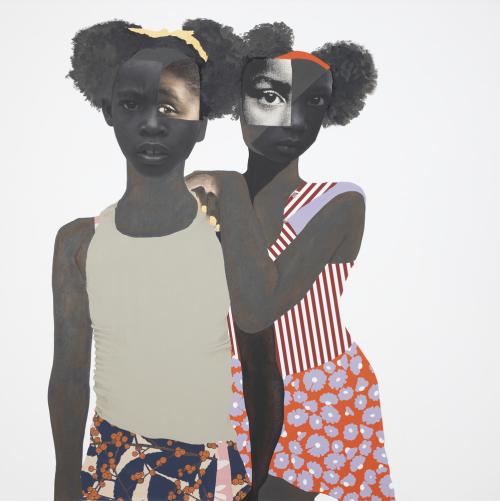Skip to main content
Kingdom Day
Artist
Mark Bradford
(American, born 1961)
Date2010
MediumMixed media on canvas
DimensionsOverall: 120 × 480 in. (304.8 × 1219.2 cm)
Overall (each panel): 120 × 120 in. (304.8 × 304.8 cm)
Overall (each panel): 120 × 120 in. (304.8 × 304.8 cm)
Credit LineCollection of the Modern Art Museum of Fort Worth, Museum purchase
Object number2011.3.A-D
Status
Not on viewCopyright© Mark Bradford
Category
Label TextUrban life is the substance, subject, and spirit of Kingdom Day, 2010, and all of Mark Bradford’s works. Although he calls his two-dimensional surfaces such as this “paintings,” they are actually made with layers of paper—not blank paper but merchant flyers, posters, and billboards foraged from the walls and telephone poles of Los Angeles. Once he attaches his scraps of material to the canvas in many thick layers, he sands and carves into the surface, incising deep lines that intersect in intricate grids and spokelike patterns.
Kingdom Day refers to the annual Los Angeles parade that honors the birth of Martin Luther King Jr. and relates specifically to events in 1992. That year, riots exploded across the city in response to the acquittal of four policemen accused of beating Rodney King—a symptom of a community unraveling. A few months earlier, the African American founder of the parade appointed a Korean-born tae kwon do master as his co-chair—a sign of hope for mending racial relations.
Bradford manipulated a billboard advertisement for the parade to produce a sprawling, maplike composition across four panels. The original billboard is largely obscured under the stratified surface, but fragments of human faces emerge through the layers. Green letters reading KINGDOM DAY are barely visible at the top of the canvas. A border of silver foil along the bottom edge of the panels provides a reflective ground for the agitated field above. Made of the actual fabric of urban life, Bradford’s cartographic abstraction visually embodies the city’s complex geography, its shifting structures of power, and its constant processes of becoming.
Kingdom Day refers to the annual Los Angeles parade that honors the birth of Martin Luther King Jr. and relates specifically to events in 1992. That year, riots exploded across the city in response to the acquittal of four policemen accused of beating Rodney King—a symptom of a community unraveling. A few months earlier, the African American founder of the parade appointed a Korean-born tae kwon do master as his co-chair—a sign of hope for mending racial relations.
Bradford manipulated a billboard advertisement for the parade to produce a sprawling, maplike composition across four panels. The original billboard is largely obscured under the stratified surface, but fragments of human faces emerge through the layers. Green letters reading KINGDOM DAY are barely visible at the top of the canvas. A border of silver foil along the bottom edge of the panels provides a reflective ground for the agitated field above. Made of the actual fabric of urban life, Bradford’s cartographic abstraction visually embodies the city’s complex geography, its shifting structures of power, and its constant processes of becoming.









